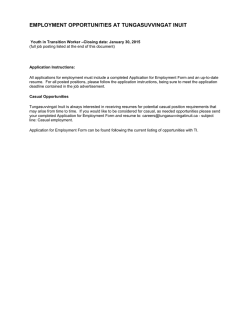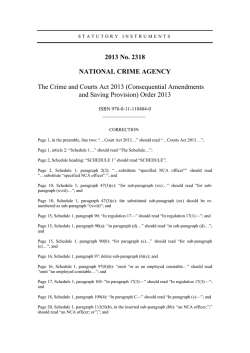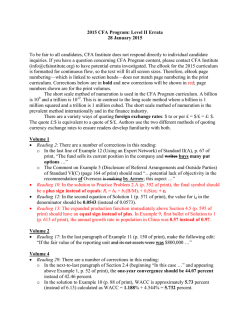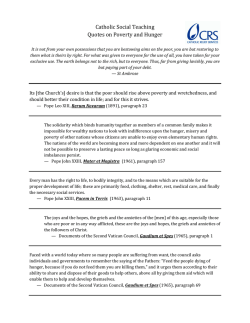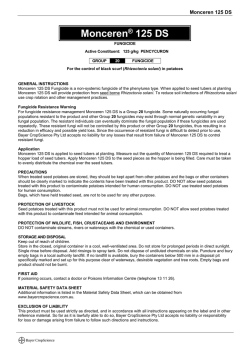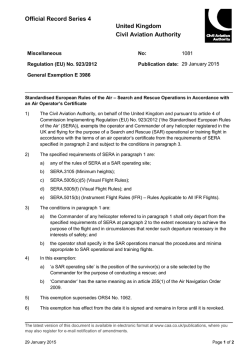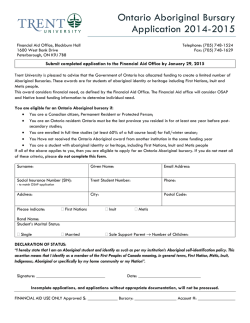
2015 Strategic Grants Initiative
Nasivvik Centre for Inuit Health and Changing Environments CALL FOR PROPOSALS FOR THE 2015 STRATEGIC GRANTS INITIATIVE The Nasivvik Centre for Inuit Health and Changing Environments is a multidisciplinary research and training centre based at Laval and Trent Universities and funded by the Institute of Aboriginal Peoples Health (IAPH), one of the 13 institutes of the Canadian Institutes of Health Research (CIHR). The Nasivvik Centre is focused on building capacity in Inuit health research through trainee support, and promoting research on environmental health topics of importance to Inuit communities. A competition for small strategic grants is being announced to support the development, conduct and completion of research projects, the communication and publication of research results, and the creation of educational materials. All projects and activities must be in the field of Inuit environment and health issues and be working directly with an Inuit community and/or organization. Projects led by or engaging the regional Inuit Research Advisor in the appropriate region are strongly encouraged and will be given preference for funding. Award amounts : $5,000 - $10,000 Applicants can apply under one of 3 different priority areas: PRIORITY 1 : Seed funding / Research planning grant (Awards up to $10,000) PRIORITY 2 : Student project completion (Awards up to $5,000) PRIORITY 3 : Research results communication, publication and development of educational materials (Awards up to $5,000) Please ensure to indicate which priority area you are applying to in your application. Applications are open to all projects and individuals engaged in the field of Inuit environment and health. To be eligible, applicants do not need to have received Nasivvik funding previously. Applications will be accepted up to 11:59pm EDT on January 30, 2015. Once received, all funds must be used by December 31, 2015. We strongly recommend that applicants also consider applying to the following two recently released Arctic Science Calls for Proposals to further support your proposed or ongoing project (see below). Please be sure to state in your application, if you are seeking co-funding from either of these funding programs for the activities contained in your Nasivvik application. 1 1. Canadian High Arctic Research Station (CHARS) Science and Technology Program 2015-2016 launched by Aboriginal Affairs and Northern Development Canada (AANDC). The deadline to submit a letter of intent is January 12th, 2015. Please direct general inquiries to Martin Tremblay at: [email protected] 2. Northern Contaminants Program 2015-2016 (AANDC). The submission deadline is January 13, 2015. More information is available here: http://www.science.gc.ca/default.asp?lang=En&n=7A463DBA-1 Description of the Priority areas: PRIORITY 1 : Seed Funding / Research Planning Grant The main goal of this priority area is to offer funding to researchers to fully develop a project idea, create and submit a competitive application to CIHR or other granting agency (research planning grant) or to support the initial steps of research (seed funding) with which a researcher or team is able to attract significant competitive funds for the full conduct of the proposed research idea. Funding can be used to (but is not limited to) hold research planning and grant writing meetings among colleagues from several institutions, hold a community workshop to plan the development of a cooperative research application, have a student or trainee conduct background research and work on a large grant writing initiative, conduct pilot surveys or field work to assess the feasibility of project design before proposal submission, etc. All activities funded must be related to or lead to the development and submission of a substantive grant application to CIHR or another appropriate granting or funding agency on the topic of Inuit environmental health. In order to be eligible for this priority area, projects should: § Fit with the thematic focus of the Nasivvik Centre and focus on health issues of importance to Inuit; § Demonstrate a strong Inuit and community interest in research project (based on community/ organizational letter); § Enhance/ build capacity among Inuit communities, organizations and individuals to participate in and use results from Inuit environmental health research (research that examines aspects of the environment as a determinant of human health); § Involve/ train community members (community residents, local, regional or territorial/ national organization, or collection or key individuals); § State clearly how the activities are required for the development of a competitive application to an appropriate granting agency for the specific topic; § Projects must result in the development of a competitive application to an appropriate identified granting agency for the specific topic within one year of reception of funding. At least one intended program competition for submission should be identified in the application to Nasivvik for this funding category. PRIORITY 2 : Student Project Completion The main goal of this priority area is to offer funding to graduate students to complete their research project, particularly when their project has gone beyond the anticipated research timeline and has exceeded the anticipated project costs. Applications under this priority area need to be submitted and signed by both the graduate student and their supervisor. 2 In order to be eligible for this priority area, projects should: § Fit with the thematic focus of the Nasivvik Centre and focus on health issues of importance to Inuit; § Demonstrate a strong Inuit and community interest in research project (based on community/organizational letter); § Have received funding from a peer-reviewed funding competition; § Demonstrate funding needs for project completion and a plan of how those funds will be used; PRIORITY 3 : Research results communication, publication and development/ implementation of educational materials The main goal of this priority area is to offer funding to researchers for: the communication of research results to research participants and stakeholders; the publication of research results for an academic audience; or the development/ implementation of educational material/ activities about Inuit-specific environmental health research in partnership with local/ regional education representatives stemming from the results of the study. Proposals for the conduct of other innovative Knowledge Translation activities for Inuit environmental health research to increase update of research results by Inuit communities, organizations and regions will also be accepted. In order to be eligible for this priority area, projects should: • Fit with the thematic focus of the Nasivvik Centre and focus on health issues of importance to Inuit; • Demonstrate a strong Inuit and community interest in research project (based on community/organizational letter); • Have received funding from a peer-reviewed funding competition; • Involve regional or local education partners (school/college/Board or Department of Education etc) in the area of focus (only applicable if applying for funding to support the development of educational materials) General Review Criteria for all Proposals: § Fit with the thematic focus of the Nasivvik Centre and focus on health issues of importance; § Fit with criteria specific for priority area applied to; § Strong community interest in the research/ training project (please attach letter of support from community council or appropriate organization); § Involve/ train community members (community residents, local, regional or territorial/national organization, or collection of key individuals) in research; § Organization of proposed activity(ies); § Background preparation and feasibility of proposed activity(ies); § Availability of research and training resources (e.g. experienced research personnel, cofunding, quality of research and training environment); § Likelihood of production and use of quality, “ready-to-use” communication and/or educational materials for Inuit environmental health research Applications: Please refer to the attached document “Project Proposal Preparation Guidelines” to complete your application. Please submit the proposal to the Nasivvik Centre Coordinator electronically at the email address below. Candidates will be contacted directly through e-mail upon receipt of and review of their application. 3 Applications must be submitted electronically to the Centre Coordinator by 11:59pm EDT January 30, 2015. Nasivvik strongly encourages all applicants to contact the appropriate regional Inuit Research Advisor during the preparation of their applications to discuss the work being proposed. Current contact information for the Inuit Research Advisors can be requested through the Nasivvik Centre Coordinator. Applications led by or involving the regional Inuit Research Advisor will be given priority in the proposal review and approval process. Further inquiries in proposal development and submission can be directed to the Nasivvik Centre Coordinator: Shirin Nuesslein Nasivvik Centre for Inuit Health and Changing Environments Indigenous Studies Department, Trent University 1600 West Bank Drive Peterborough, ON, K9J 7B8 Tel.: (705) 748-1011, ext 7242 Fax: (705) 748 1416 Email: [email protected] Website: www.nasivvik.ca 4 Nasivvik Centre Project Proposal Preparation Guidelines *Please note that sections 1-9 and 11-14 apply to the overall project, and section 10 applies more specifically to the aspects of the priority area (1, 2, or 3) of the Strategic Grants Initiative. 1.0 Project Title: 2.0 Principal Researcher Name and Contact Information: 3.0 List of Research Team Members: 4.0 Program the research project is currently funded under (if applicable): 5.0 Priority Area being applied to: 6.0 Project Objectives: Bullet form listing of the basic objectives of the existing or planned project and proposed activities for which this proposal is being submitted to the Nasivvik Centre (training, mentoring, knowledge translation, education material development etc). 6.0 Project Rationale: 1–2 paragraph rationale of the project and its background. 7.0 Identification of the location where the project will take place: Short statement of the location (region/ communities) where the project/training will take place (if field work is required) and where the project will be based. 8.0 Methods: Short description (1 paragraph) of the methods to be used in the project. 9.0 Activities and Timeline for 2015: Table form outline of dates and activities for the proposed work. Project Activity Projected Date 10.0 * If applying for funds to develop a new project (research planning grant) / expand an existing project idea (seed funding) under Priority 1, please complete section 10A. 5 * If applying for funds to complete a student research project under Priority 2, please complete 10B. * If applying for funds to develop education/ promotion materials for Inuit environmental health research or conduct innovative Knowledge Translation activities, please complete section 10C. 10.0A. Plan for Seed Funding and Research Planning Grants: If requesting seed funding to support the initial steps of a research project or pilot a project concept, the required proposal items are: • Short description (1 paragraph) of the project idea, proposed use of the seed funding, including methods and activities to be conducted under the pilot, and how these activities will contribute to the development of the overall project. • Short description (1 paragraph) of the proposed team of collaborators and their roles within the development phase of the project. Please include a description of any proposed new personnel that would be employed within the grant. • Short description (1 paragraph) of concrete plan and commitment to apply for and attract/leverage funding for the full project implementation and operation. If requesting funds for a planning grant to develop a new project idea the required proposal items are: • Short description (1 paragraph) of the project idea, proposed use of the planning funding, including methods and activities to be conducted under the development grant, and how these activities will contribute directly to the development of a substantive funding application to be submitted. • Short description (1 paragraph) of the proposed team of collaborators and their roles within the development phase of the project. Please include a description of any proposed new personnel that would be employed within the grant. • Short description (1 paragraph) of how this funding will contribute to leveraging more funds, and identification of schedule and which CIHR or other appropriate granting or funding agency competition will be applied to as a result of the planning accomplished with this funding. Grant awardees must provide a copy of proof of submission of a complete grant application to CIHR or other competitive funding process within the year of funding. 10.0B. Plan for completing student research project: • Short description by the graduate student’s supervisor (1 paragraph), explaining the need for funding for the completion of the project. • Short description (1 paragraph) of proposed use of funds, including a list of research activities and a specified timeline for research activities that require funding for the completion of the project. 10.0C. Plan for the communication and/ or publication of research results, or the development and implementation of educational materials: • For communication of research results: Short description (1 paragraph) of the communication plan for research results and a project breakdown of the cost 6 associated with the plan. Please include information about the type of communication products (i.e. summary reports, website, recording of shows, etc), the avenues for communication (i.e. radio, TV, public spaces, schools, etc), the audience and a specified timeline of the communication plan. • For publication of research results: Short description (1 paragraph) of the publication plan, a description of anticipated costs associated with publication and/ or printing (can include translation costs), the identification of the publisher, and the anticipated timeline of publication. • For development of educational materials: o Short description (1 paragraph) of educational materials to be developed and activities to be conducted. o Short description (1 paragraph) of team members, roles and arrangements that have been made for use/ implementation of materials or conduct of the KT activities in the community. Be sure to include name of University researcher AND community education representative involved (or policy or decision maker representative in the case of KT activities) in the project team list and describe their roles. Projects must include a representative from both a University (researcher) and community or regional educational representative to be eligible for consideration under this objective. 11.0 Deliverables: Bullet form listing of the scientific and communication or human resource development (e.g. number of students trained and what expertise gained) deliverables to result from this project. 12.0 Detailed Budget: See attached budget form. As Nasivvik Centre funding is to be used to complement or leverage other existing or potential future funds, please include a listing of other sources of funds already secured or pending for the project activities included in this proposal. For applications to the Seed Funding / Planning grants, please include the proposed budget, and indicate any other funding that has been acquired, applied to, or will be applied to with the work conducted under this planning grant. 13.0 Ethics All projects must receive appropriate ethics approval from the researcher’s home institution and must obtain the appropriate scientific licenses for research in the proposed northern region (Nunavut Research Institute, Aurora Research Institute, Nunavik Nutrition and Health Committee, Nunatsiavut Government) before commencing work. Please provide a copy of ethics approval or licenses obtained. For applications to the Seed or Planning Funding grants, if ethics approval has not yet been obtained, please indicate through which institutions and licensing boards approval will be obtained. Final copies of ethics approval are also required by the Nasivvik Centre to keep on file with funded applications. 14.0 Literature referenced: Include a list of literature referenced. 7 Detailed Budget Form Template: *Please provide detailed line items (as appropriate under each budget item heading) Budget Item – Description Amount Amount from Requested from other sources Nasivvik Centre Salaries: Travel (including field costs): Professional Fees (contracts, translation etc.): Other Costs (please specify): TOTALS: PROJECT TOTAL: (Amount requested from Nasivvik Centre + Total from Other Sources) 8
© Copyright 2026
